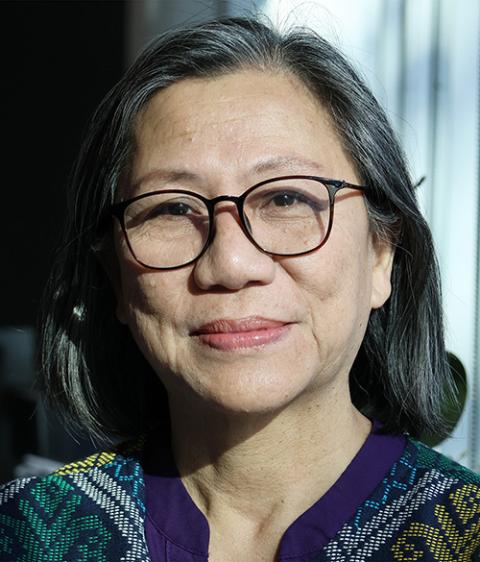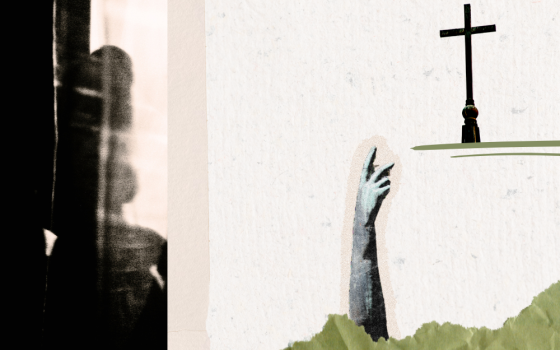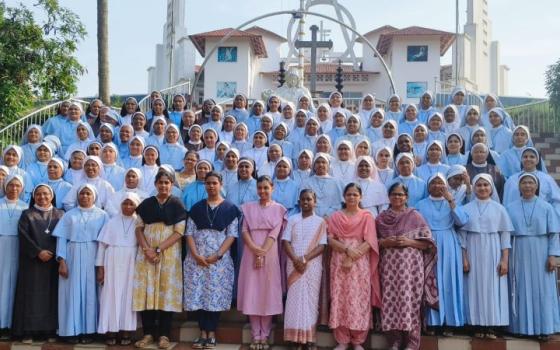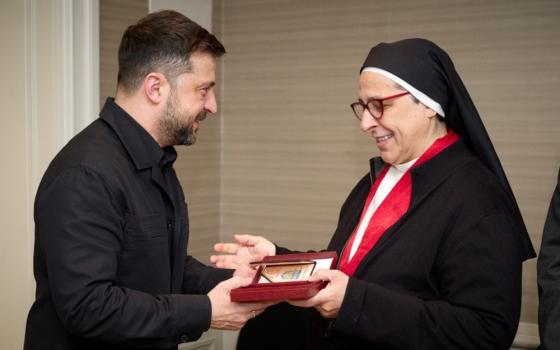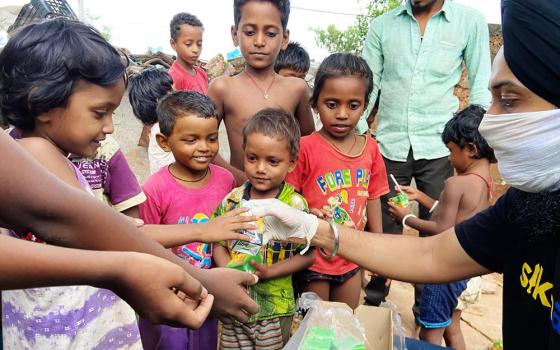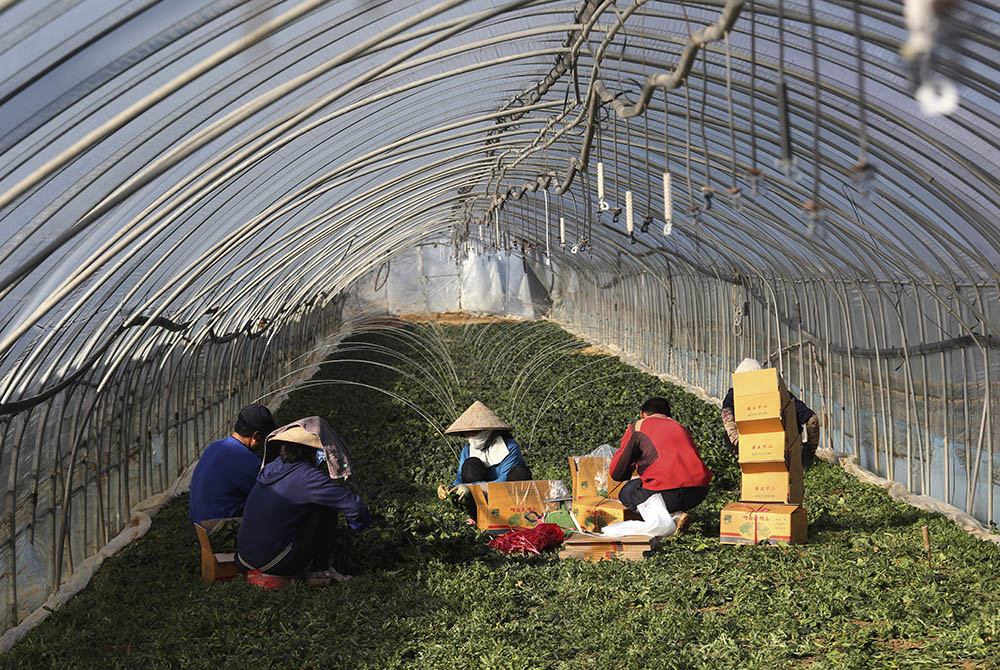
Migrant workers work inside a greenhouse at a farm in Pocheon, South Korea, on Feb. 8, 2021. (AP/Ahn Young-joon)
Over the past few decades, rapid economic growth has driven new migration patterns in Asia, which is home to about 60% of the world's population. People have moved both within their countries and abroad, making them susceptible to danger, abuse and exploitation.
Catholic-inspired organizations, especially women's religious congregations, actively work with migrants, making it a key part of the evolving new ministries of the Catholic Church in Asia.
"The rise of nationalism has sometimes identified migrants as a source of socioeconomic risk. And Asian Christians are often at the heart of these debates," said Michel Chambon, research fellow at the National University of Singapore.
Chambon told Global Sisters Report that the migration crisis is worsening as more young, educated people look for new opportunities across Asia and beyond.
The Migrant Ministry by Catholic Sisters in Asia Report highlights a collection of best practices from sisters of various congregations who share stories reflecting specific conditions, challenges and opportunities.
In 2023, the Vatican's Dicastery for Promoting Integral Human Development tasked the Scalabrini Migration Center, a Philippines-based organization researching international migration, and the Missionary Sisters of St. Charles Borromeo-Scalabrinians with documenting 30 best practices for caring for migrants and refugees, especially those carried out by Catholic sisters in Asia.
The process started with a list of women's congregations working with migrants, based on data provided by the dicastery, said Maruja M.B. Asis, a consultor to the Dicastery for Promoting Integral Human Development. Since Asia is a huge region, the report, published in 2024, could only cover a few countries, said Asis.
In Myanmar, for example, thousands of people seek refuge in India, especially those from the Chin ethnic community. According to Sr. Rani Punnaserril of Sisters of the Holy Cross Menzingen, many people have crossed through the borders of Manipur and Mizoram, eventually reaching Delhi, a city that provides both shelter and hardship.
Local leaders and community members estimate that around 4,500 refugees and asylum seekers from Myanmar currently reside in Delhi, and some 98% of them belong to the Chin community.
Punnaserril offers the displaced people legal and material assistance, along with spiritual and emotional care, as part of the work of the mission of the Commission for Migrants of the Conference of the Catholic Bishops of India and her role as secretary of the Commission for Migrants of the Delhi Archdiocese.
"In this work, we collaborate with other congregations, including the Jesuits, Salesians, and various women's religious congregations, as well as some civil society organizations, to respond to the needs of migrants," Punnaserril said in her testimony for the report.
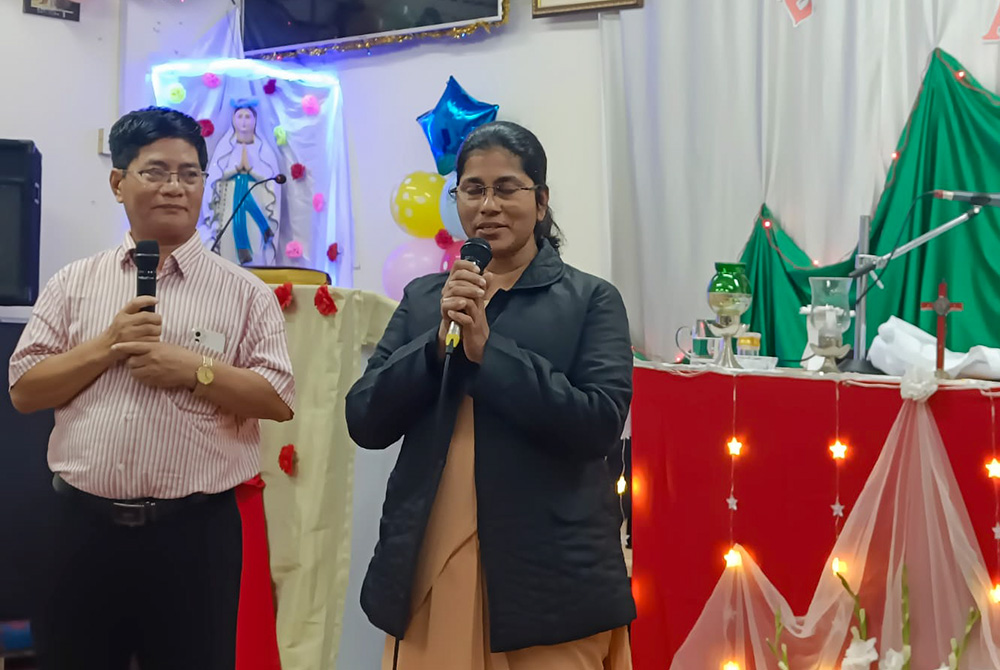
Holy Cross Sr. Rani Punnaserril addresses a migrant conference in New Delhi. (Courtesy of Rani Punnasseril)
"Much of the community consists of youth, juggling small jobs while striving to complete their education and rebuild their lives in an unfamiliar land," she said.
This documentation plus others led to a conference in January 2025 in Singapore, co-organized by the Paris Cité University-National University of Singapore research collaboration and the Initiative for the Study of Asian Catholics, on the theme "Framing Migration: The Role of Religious Actors in the Production of International Law."
"There is a constant need for careful investigation and critical analysis of the exact role of migrant people in the movement — whether they are economic migrants or political refugees," said Chambon, who coordinates the Initiative for the Study of Asian Catholics.
"Although there is already extensive research on various aspects of migration, we sought to examine the role of Catholicism in shaping our understanding of migration. By considering Europe and Asia together, our goal was to understand how Catholic entities help negotiate legal and informal norms about migration," said Chambon, who is also a cultural anthropologist and theologian.
Building on a rich body of scholarly debates and a large community of specialized scholars, this conference aimed to highlight a vital activity of the church — a transnational network of people and institutions that "accompany people on the move, wherever they are," he added.
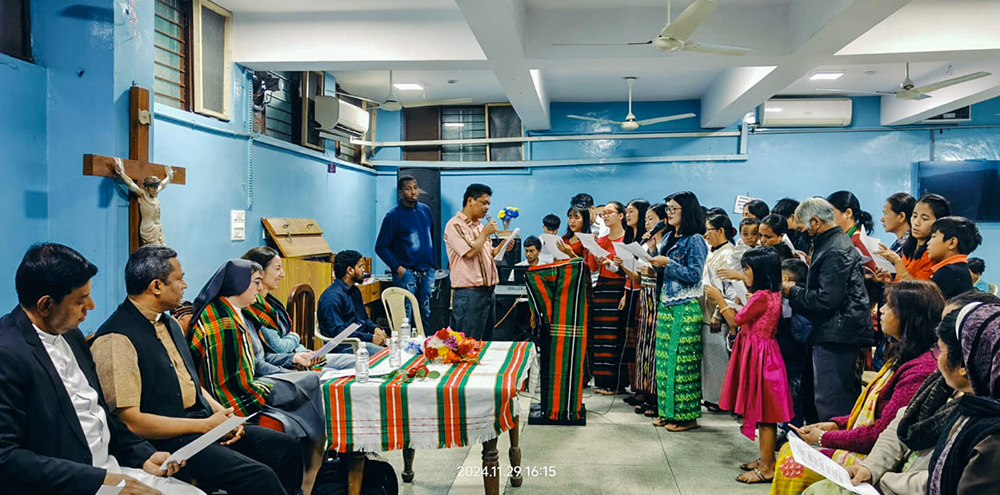
Migrants from Myanmar are provided food kits, legal guidance and medical aid by the Sisters of the Holy Cross Menzingen in India. (Courtesy of Rani Punnasseril)
"The sisters' migration-related initiatives would be a very concrete way of recognizing the many roles and multifaceted contributions sisters have made in the migrant ministry in our part of the world," said Asis, also director of research and publications at Scalabrini Migration Center, Philippines.
The center has helmed a training program, called EXPLOS, since 2001 to provide a structured way of empowering those involved in pastoral ministry with migrants.
Asis said she had the chance to meet many pastoral workers, including nuns, involved in offering language classes, counseling, cultural activities and legal support to migrants.
The report also highlights nuns' initiatives to provide people options to stay put and avoid situations that force them to migrate.
"What the report captures is the resourcefulness, the many gifts, generosity, dedication and competence of the sisters in developing, implementing and managing a variety of migration-related programs and services," Asis said.
For example, Notre Dame Sr. Fabiola Choi reported her work with migrants in South Korea through the story of a Filipina woman who came to the country after marriage. Her husband died in 2009, and the traditional values of her in-laws, who preferred sons over daughters, left the woman and her three daughters alone.
The woman came to the Suncheon Migrant Center, where Choi ministers, to receive support.
Advertisement
"Male volunteers served as father figures to them, helping to fill that emotional gap, while all of us at the center surrounded them with love and support," Choi said in her testimony. "We watched them grow, not only in age, but in confidence and joy."
In 2024, the Archdiocese of Gwangju, South Korea, launched a parish dedicated to serving migrants. This development highlights the challenges migrants face in integrating into Korean Catholic communities, the sister said.
"The Korean Church must do much more to genuinely walk with migrants," she said. "Many challenges still remain, and we have numerous calls to answer. Most importantly, we need to embrace the spirit of synodality — walking together."
Asis said this approach of the nuns stands out because their programs are based on Catholic teachings that stress "the centrality of the human person." These initiatives maintain "a holistic view of migrants" and hence appreciate their "multiple needs and the importance of the faith dimension," she said.
Bryan Goh, a researcher at the National University of Singapore, said, "There could also be more coordination between churches in the countries of origin and destination. In Asia, we are not only dealing with the challenge and need to welcome migrants, but also with countries of origin."
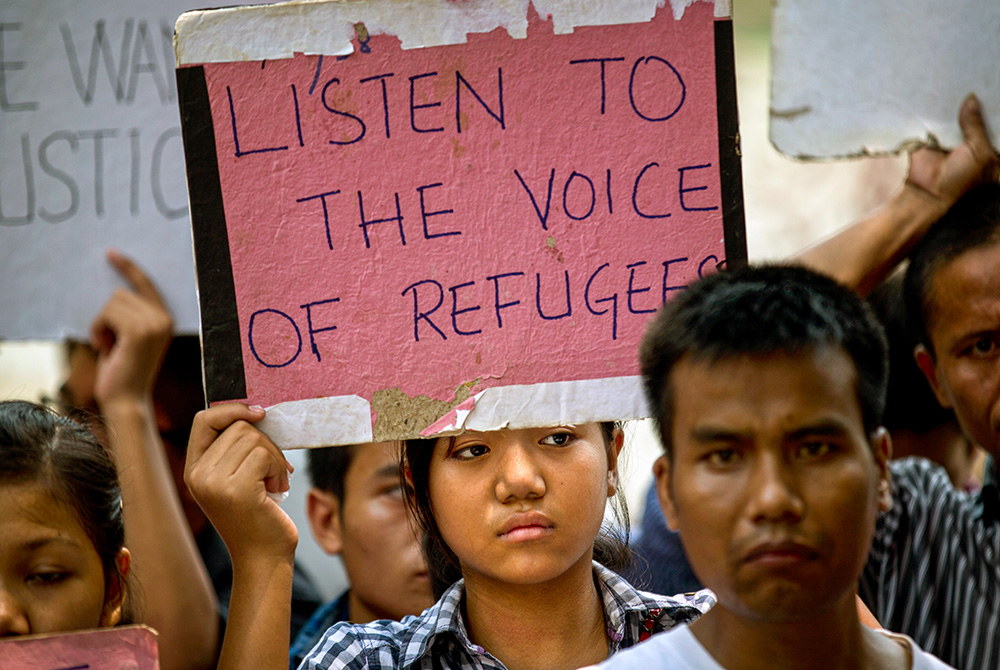
Members of the Chin ethnic minority group from Myanmar rally outside the New Delhi office of the United Nations High Commissioner for Refugees on June 19, 2015, a day ahead of World Refugee Day. (AP/Saurabh Das)
Goh, who participated in the conference, said the Catholic Church not only provides "a belief system but also the structures and spirit to facilitate and frame migration through its social teachings."
Pope Leo XIII pioneered these social teachings with his 1891 encyclical Rerum Novarum, articulating the church's role in addressing social issues, Goh said. "We wonder if Leo XIV will take the same route."
He said that many people do not realize that the church "has a rich body of reflections and social teaching on migration" since the time of Pope Leo XIII, from whom Leo XIV draws inspiration.
These teachings are "not necessarily cast in stone, but the structures are there, such as going from the universal to the national and then to the very local and grassroots level so that we can have that, and we can be organized and structured along the lines," he said.
Although the study documents only the work of nuns in the field of migrants, a wide range of Catholic entities are also involved in ministry, Chambon said.
The church does not have data to show the involvement of other entities working for migrants. "They might be less vocal about this. Thus, their ministry to various types of migrants tends to be ignored or even made invisible in ecclesial communication."

